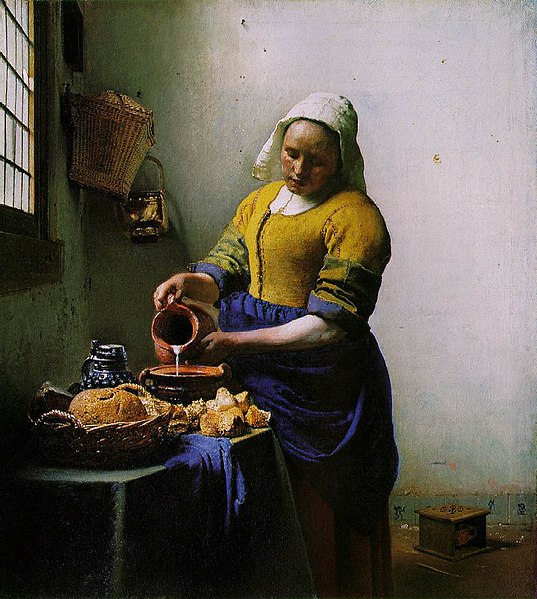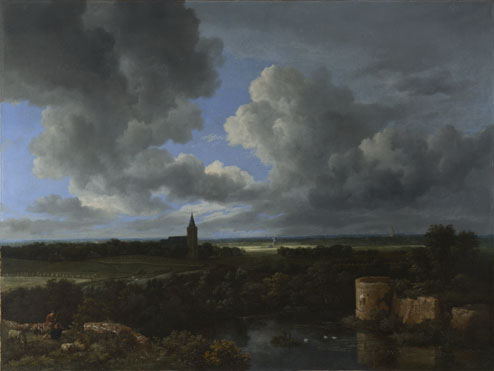After Monteverdi died, as I have said, there was a little bit of a gap in terms of big names, but this is now filled by the next composer who is known for making developments to the orchestra whose name was Giovanni Battista Lulli (1632-1687). In this decade he became court composer for Louis XIV, adopted France as his own country and changed his name to the more French sounding Jean-Baptiste de Lully, to fit in.
Lully would later compose many operas but the young King Louis XIV loved dance and as superintendent of music to the king, Lully did much to develop ballet in the 1660s, which like opera had its origins in Italy. Lully collaborated on several ballets with Molière the leading literary figure of the day.
The music he composed had its own distinct French style and a grandeur which suited King Louis XIV and matched the palace at Versailles, the construction of which really got going in this decade and where much of his music would have been performed. Lully was the best composer of his day, not just in France but throughout Europe. I sort of see Lully as the beginning of really good orchestral music.
Also in this decade comes Heinrich Biber composing mainly in Salzburg Austria, a virtuoso violinist and one of the first great composers of violin music. He and Lully established the violin as the main instrument, other than keyboards, in Europe. While Lully composed for ensembles and orchestras, Biber's music was more for the solo violin with accompaniment. Biber was very much an original. Like Janequin back in the 1520s he composed some early 'programme music', imitating things like frogs and chickens with his instrument. This music is weird but worth a listen.
Also in this decade comes Heinrich Biber composing mainly in Salzburg Austria, a virtuoso violinist and one of the first great composers of violin music. He and Lully established the violin as the main instrument, other than keyboards, in Europe. While Lully composed for ensembles and orchestras, Biber's music was more for the solo violin with accompaniment. Biber was very much an original. Like Janequin back in the 1520s he composed some early 'programme music', imitating things like frogs and chickens with his instrument. This music is weird but worth a listen.
Apart from Lully and Biber I have stumbled upon Johan Rosenmuller, another German violin composer who moved to Italy and composed violin music from there. I think the music from him I have selected is from this decade though I am not too sure.
Lully – Bourree Du Divertissement De Chambord (1669) Jordi Savall -Les Grandes Eaux Musicales Du Versailles
Lully – Preludes Des Trompettes Et Autres Instruments Pour Mars Jordi Savall - Les Grandes Eaux Musicales Du Versailles
Rosenmuller Trio sonata in E minor II Allegro
Rosenmuller Trio sonata in E minor IV Prestissimo
General History
During this decade Holland, England, France and Denmark were all at war with each other. The most powerful person on the planet, Louis XIV began ruling in 1661 at the age of 24 without his prime minister the Italian Cardinal Mazarin who died that year. Louis was a benefactor of years of shrewd policy making firstly under Richelieu and then Mazarin and by now France was rich, prosperous and the most powerful of nations. By the end of his reign in 1715 Louis had squandered the country’s wealth and power, by among other follies, blowing money on non-beneficial wars and persecuting the protestant Huguenots, many of whom had been France’s best craftsmen.
London had the double disaster of the great plague in 1665 and the great fire in 1666.
Art

The centre of musical prestige might have moved to France but the greatest artist of his day, a generation younger than Rembrandt who died in 1669, could still be found in Holland and his name was Jan Vermeer van Delft (1632-1675). His paintings were in keeping with the Dutch ultra realistic style as can be seen in brilliant works like ‘The Kitchen-Maid’ above. Maybe his most popular work is 'The Girl with a Pearl Earing' below.



Also in Holland the landscape painting begun in France with Claude Lorraine caught on as seen in the works of Jacob Van Ruisdael (1628-1682) the leading Dutch landscape painter whose picture entitled ‘An Extensive Landscape with a Ruined Castle and a Village Church’ (above) is one of his most famous and another influential Dutch landscape painter called Aelbert Cuyp (1620-1691) who finished his ‘River Landscape with Horsemen and Peasants’ (below) in 1660 and which some see as the culmination of 17th Century Dutch landscape painting.
Literature
Molière (1622-1673 real name was Jean-Baptiste Poquline –was an actor as well as writer and Molière was his stage name.) was writing his plays and is considered to be the creator of modern French comedy and one of the greatest comedy writers in all Western literature known for his excellent plot writing skills. Moliere reached the height of his fame at this time and most of his best known works were first performed during this decade.
In 1667 John Milton (1608-1674) published his long poem ‘Paradise Lost’ concerning Adam and Eve and the Garden of Eden which is considered one of the greatest works of English literature and which due to blindness he had to dictate to his two daughters.
Architecture
Bernini (still going strong) and others made the Italian Baroque style ever more dramatic A highlight of Bernini’s career from 1666 was the stairway between St Peter’s in Rome and the papal apartments which is flanked by columns, shortening as the stairs ascend, creating the illusion that the stairway is of a greater length.
In 1667 Guarino Guarini began work on the chapel of the holy shroud in Turin with a dome, made up of six hexagonal layers, which, when seen from the interior has a marvellously dramatic effect.
Louis XIV got J. Hardouin Mansard started on his enormous palace at Versailles, which is dull in the detail but extremely impressive simply due to its scale. It took 47 years to build, and notwithstanding the music of Lully, this really is the most symbolic expression of power and wealth the king could make.

Science and Technology
Science was now getting more recognition from governments, first in England with the ‘Royal Society of London for improving natural knowledge’ being founded in 1660. This was something Francis Bacon had wanted as Lord Chancellor back in the 1620s. The French followed suit with the Paris Academy of Sciences founded in 1666. These were institutional bases for scientists. Other countries later set up similar government backed organisations.
Following the success of the telescope, the microscope was now beginning to have its day. Jan Swammerdam was the first to use it to examine insects. In 1665 another microscopist, Robert Hooke, published ‘Micrographia’ the first major publication for the Royal Society and the first scientific best seller bringing about a new interest in microscopy. In it he coined the biological term ‘cell’. The microscope opened up a whole new world for scientists to explore.
Robert Hooke had collaborated with Robert Boyle to invent the air pump (aka the vacuum chamber) in 1650s. Robert Boyle became very famous for his numerous writings and experiments in the 1660s and is seen as the father of chemistry.